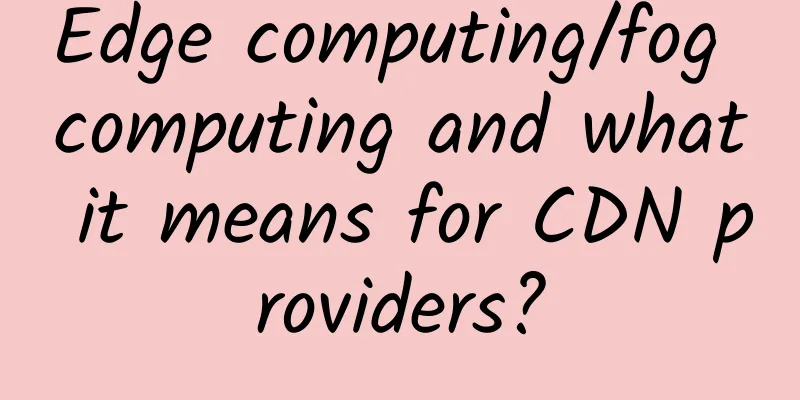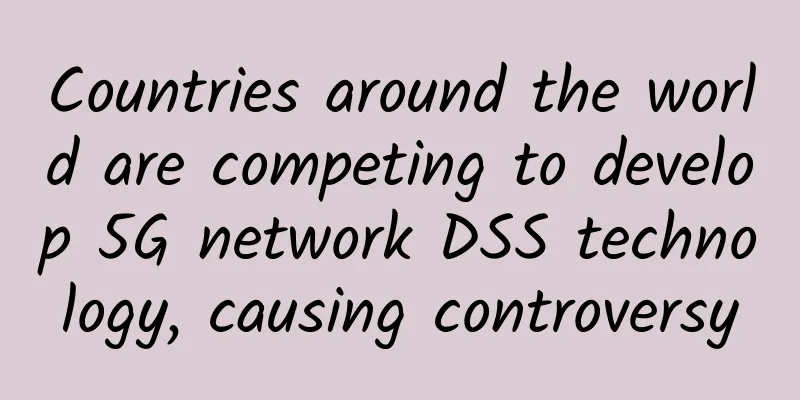Three major 5G concepts and four key technologies

|
The situation is tense and there is little content to update. This subscription account will try its best to find content related to the protocol to help friends understand 5G. 5G is divided into two parts: NewRAN's new technology NewRadio, abbreviated as NR, and NGCore, abbreviated as NGC. 5G is the abbreviation of the fifth generation mobile communication system. The current mainstream 5G protocol is proposed by 3GPP (a self-organized group of operators, terminal, equipment manufacturers and research institutes) and confirmed as the 5G standard by ITU. The current standard version of 3GPP is R15, and 4G LTE and NR protocols are developed in parallel. Generally speaking, RAN and Core evolve together, but the current 5G is different. It is divided into two steps. The first step is that NewRadio+EPC and LTE form dual connection, namely NSA (non-independent networking). The second step is that NewRadio+NGC fully evolves to 5G, namely SA (independent networking). So what is there to look forward to in 5G compared to 4G?
1. Three major application ideas eMBB, enhanced mobile broadband technology, means higher cell rate, large bandwidth (supports 100mhz), multiple antennas (MaMIMO), and more efficient coding LDPC and POLOR. mMTC, a massive machine communication technology, supports more users in a cell and consumes less power. URLLC, ultra-low latency and highly reliable communication, the cell can support lower end-to-end latency and lower reliability, and is used to support communication between machines and to achieve precise and high-speed control. In fact, these three scenarios are full of contradictions in terms of implementation technology. Large bandwidth is incompatible with low power consumption, large-scale links are incompatible with low latency, and low latency is incompatible with high reliability. Therefore, so far, the first available protocol version only focuses on eMBB, and there are almost no complete and available protocols for URLLC and mMTC. 2. Reconstruction of ten key technologies 2.1 Flexible and scalable OFDM subcarrier spacing can support widths of integer multiples of 15kHz, up to 480kHz subcarrier spacing. This can support golden frequency bands from hundreds of MHz to ultra-high frequencies up to tens of GHz. Technically, it is no longer limited to the spectrum range and can use carriers arbitrarily and use carrier aggregation. 2.2 Flexible frequency domain bandwidth, which can support bandwidths from a few MHz to several hundred MHz, and high frequencies can support cell bandwidths up to 400MHz. Through the configuration of BWP (component carrier bandwidth), the UE does not need to support digital signal processing of the entire cell bandwidth, but only needs to support the necessary limited local bandwidth. The system will coordinate the effective allocation of system bandwidth between UEs, which can greatly reduce power consumption, reduce the complexity of terminal chips, and reduce terminal costs. The physical channel parameters of BWP can be configured independently, which also provides the possibility of supporting more diverse and complex scenarios, such as different BWPs using different subcarrier spacing to achieve service support with different delays in the same cell. 2.3 TTI reconstruction supports the traditional scheduling with slots as one TTI and the scheduling with several symbols as one sTTI. Faster scheduling cycles and feedback can significantly shorten the end-to-end delay. The cascading of shorter TTIs can improve reliability and replace the traditional HARQ cycle merging, taking into account the dual indicator requirements of delay and reliability. 2.4 Support for massive MIMO. From 1/2/4/8 antennas in LTE to up to 256 antennas in the new air interface, MIMO is no longer limited to two-dimensional spatial multiplexing and can support 3D beamforming, which can support more multiplexing possibilities and enhance coverage capabilities. 2.5 Design of pilot signals along the channel. The cell-level pilot signal design of LTE results in pilot signal interference in neighboring cells no matter how it is configured during large-scale co-frequency networking, which seriously reduces the measurement accuracy. The new air interface uses configurable narrowband pilot symbols SSB and pilot signals along the dedicated channel, so that the cell-level pilot signals can be arbitrarily distributed on a small bandwidth. A large number of pilot signals are accompanied by scheduled channels. On the system side, pilot signal interference can be avoided through large-scale scheduling, resulting in higher measurement accuracy and better performance. 2.6 Uplink and downlink decoupling: Uplink data transmission and control are not completely dependent on downlink, and downlink data transmission and control are not completely dependent on uplink. Uplink abandons synchronous HARQ, and can realize new transmission and retransmission at any time. The control channel can be arbitrarily configured at an appropriate time-frequency position, and the scheduling control information can arbitrarily specify the time-frequency domain position of data transmission; the downlink scheduling control information can arbitrarily specify the channel time domain and frequency domain position of feedback. The benefits of this are obvious. The system can allocate resources according to business needs and load, and the uplink and downlink are decoupled. 2.7 Network Function Virtualization (NFV) achieves the decoupling of software and hardware. Functions no longer rely entirely on dedicated devices, but only on computing and storage capabilities, which can come from traditional hardware or dedicated acceleration engines. The software is divided into microservices that can provide some independent functions, and are used to support customized dedicated networks through system orchestration. Obviously, such microservices are more flexible, and repairs and upgrades no longer affect network availability on a large scale, and can support on-demand customization and upgrades at any time. 2.8 Separation of control plane and data plane. The control plane is more concerned with status and process, usually with the number of supported signaling as an important indicator. It can be considered centralized, but it can also be vertically distributed through layered design. The data plane is more concerned with throughput and latency. By using CDN and SDN technologies and dedicated data forwarding acceleration engines, the user plane performance can be significantly improved. 5G has separated the control plane and data plane in network architecture design. 2.9 The three-layer deployment architecture of RAN enhances the original two-layer deployment architecture of tower site to a three-layer deployment architecture of tower site cloud, splitting the baseband digital processing part and signaling control part (control) and packet aggregation and forwarding part (data) in the site into two parts. The former is deployed in the site computer room to reduce a large amount of transmission bandwidth and latency requirements, and the latter is deployed in the telecom cloud to reduce hardware costs and obtain centralized control capabilities. 2.10 The support of intelligent operation and maintenance capabilities has enhanced the traditional SON, further upgrading the intelligent operation and maintenance of telecommunications infrastructure to the intelligent operation and maintenance of end-to-end services. SON still focuses on improving the wireless performance indicators of telecommunications infrastructure, but the end-to-end user experience is not entirely related to the performance of the wireless network. It may also be closely related to the user's business form requirements, the end-to-end core network quasi-real-time congestion level, and the data security protection level. The new intelligent operation and maintenance capabilities require higher-level coordination and control. 3. The future is worth looking forward to Every new thing that comes out faces the pursuit of some people and the ridicule of others. In the early stage of new things, it is difficult for most people to see the whole picture, and they can only make different opinions based on the cognitive limitations of blind men touching an elephant. Then 5G, which encompasses three major application concepts and is equipped with ten key technologies, should be more exciting! This subscription account will continue to release interpretations of the 5G protocol. Welcome to subscribe. Due to my limited personal knowledge, there are inevitably some interpretation errors. Please correct me. Errata information is usually posted in the comments or in the next update. |
<<: Detailed explanation of 5G communication: current status of 5G technology and future trends
>>: Miss 5G's "Martial Arts Competition to Win a Husband"
Recommend
How to estimate the power configuration of 5G base stations?
5G base station construction, supporting faciliti...
Five reasons why the Internet of Things needs its own network
【51CTO.com Quick Translation】Last week, AT&T ...
Five network management trends for 2022
With the advent of the Internet era, people need ...
How to help enterprises improve the WiFi performance of wireless LAN?
Assuming your company has no money for a wireless...
5 Reasons Why Process Industries Need Low-Power Wide Area Networks
From oil and gas, refineries and chemicals to pha...
Don’t let digital experience get in the way of your business strategy
Do you remember the last time you expressed your ...
Weibu Online was shortlisted for CDM 2021 Black Unicorn Awards
On August 3, 2021, CyberDefense Magazine, a world...
IBM acquires Red Hat. Will it be its rival, Google or Huawei? Let's wait and see.
Recently, IBM completed the acquisition of all is...
China Mobile has built more than 410,000 5G base stations
On April 25, China Mobile General Manager Dong Xi...
Huawei and Chongqing jointly build cloud-based intelligent industries at the first AI Expo
[51CTO.com original article] On the afternoon of ...
What does 5G high and low frequency networking mean?
[[346977]] This article is reprinted from the WeC...
F5 Launches F5 Advanced WAF for Multi-Cloud Application Security
Beijing, China, May 14, 2018 – This week, F5 (NAS...
Krypt: iONcloud cloud platform Halloween 15% off, San Jose/Los Angeles/Dallas/Honolulu data centers
The last time the tribe shared information about ...
MWC19 Shanghai | Open decoupling, the next generation evolution of operator networks
[[268794]] With the promotion and application of ...
The twelfth episode of the Aiti tribe clinic: How to distribute tens of millions of web requests
【51CTO.com original article】 Activity description...









